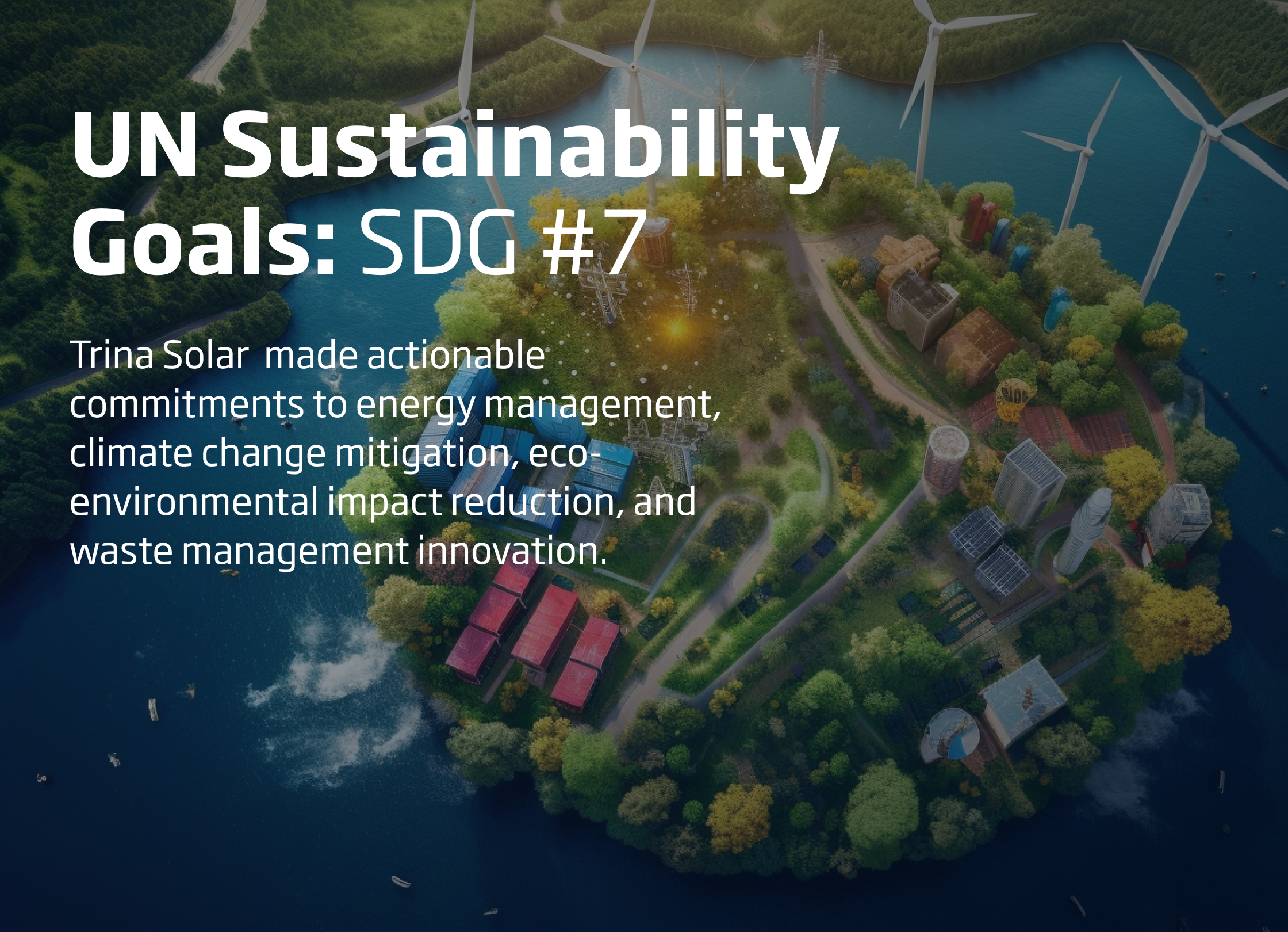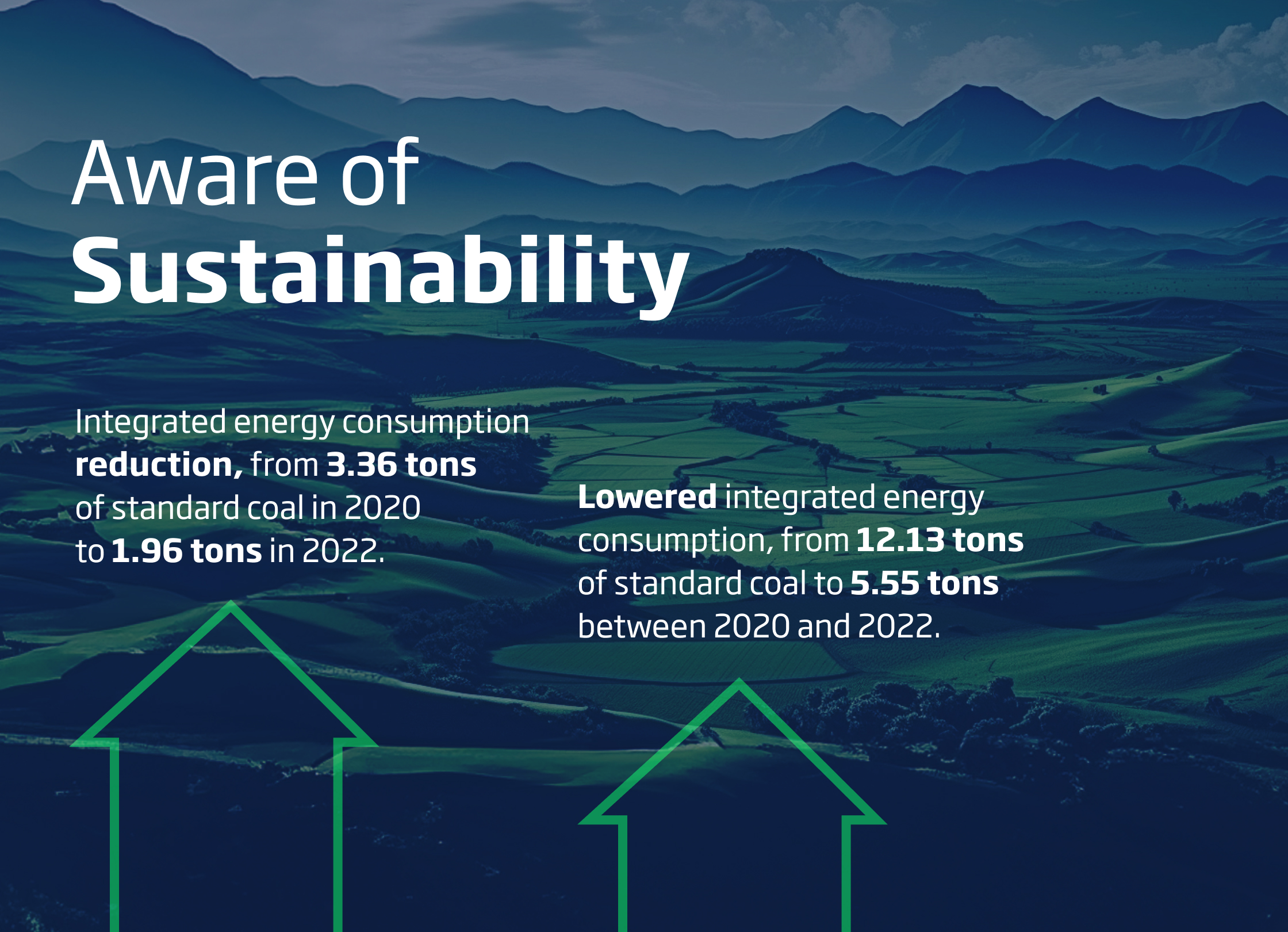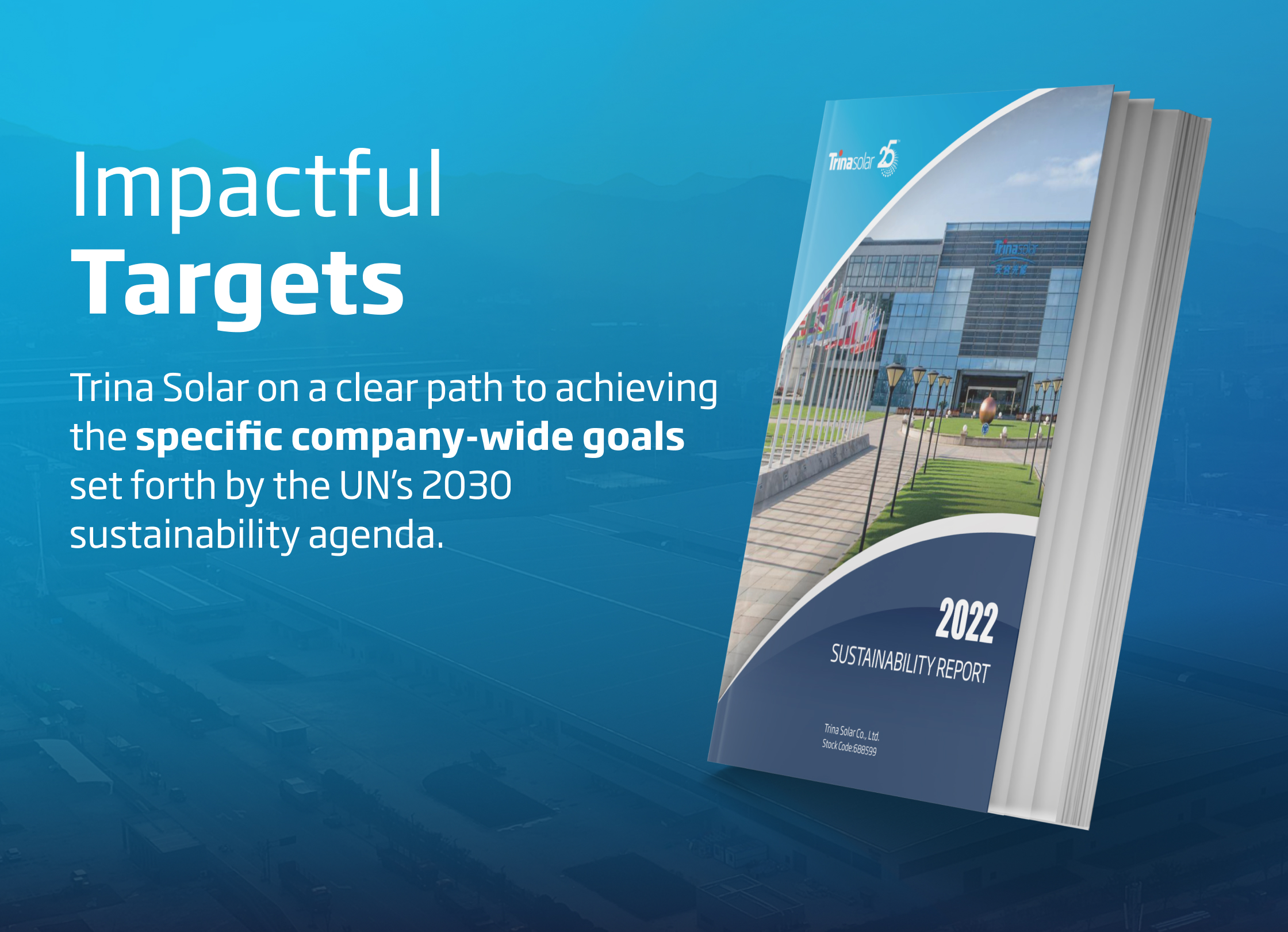Supporting the UN’s Sustainable Development Goals
- 23/11/22
- Industry News,Responsible Earth,Trina Success
As a global leader in smart energy solutions, Trina Solar is committed to supporting all global efforts to build an international green energy infrastructure. A major part of this process is supporting efforts to achieve greater sustainable development over the next few years. To do this, Trina Solar is implementing numerous initiatives to increase renewable energy usage, reduce the company’s environmental footprint, and eliminate harmful waste.
Trina Solar is proud to support the United Nations’ Sustainable Development Goals (SDGs) by moving towards a comprehensive sustainable business model. First adopted in 2015, the UN’s SDGs are based on the goal of achieving worldwide sustainable development by the year 2030. The UN’s 2030 Agenda for Sustainable Development features 17 distinct goals, including the creation of sustainable cities, an increase in responsible consumption and production, and an international effort to achieve affordable clean energy.
Trina Solar, a worldwide leader in the development of sustainable energy, fully supports the UN’s sustainable development goals through the year 2030. As such, Trina Solar has taken several company-wide initiatives to achieve tangible goals within the UN’s SDG framework. In addition to corporate sustainability reports, ESG reports, and other comprehensive assessments, Trina Solar has set forth specific targets related to the company’s own energy consumption and ecological footprint. By 2030, Trina Solar will be able to meet clear targets aligned with the broader UN sustainable development goals.

How Does Trina Solar Support the UN SDGs?
Trina Solar’s sustainability goals parallel the core principles guiding the UN’s 2030 sustainability goals via several key metrics. While Trina Solar is committed to supporting all 17 of the UN’s sustainability goals by 2030, the company’s corporate model and output correlate with individual goals in specific ways. Thus, Trina Solar is aligning its corporate practices to a few key UN SDGs to achieve maximum results in the long term.
The most significant UN sustainability goal for Trina Solar’s industrial presence is SDG #7, which seeks to achieve affordable clean energy by 2030. Even before the ratification of the UN’s 2030 agenda, Trina Solar was a global leader in sustainable green technology. Thanks to its achievements in the development of solar photovoltaic modules, intelligent solar tracking systems, energy storage solutions and other green technologies, Trina Solar has already achieved significant innovation. Importantly, this innovation can be integrated across the world and move global energy infrastructure much closer to the UN’s sustainable goals by 2030.
Trina Solar has also made actionable commitments to energy management, climate change mitigation, eco-environmental impact reduction, and waste management innovation.
While these achievements most clearly align with the UN’s SDG #7, they also serve to advance several other of the UN’s sustainability goals for 2030. For example, Trina Solar’s advances in sustainable solar power also align with the UN’s SDG #9, which seeks to achieve sustainable “industry, innovation, and infrastructure.” Other UN SDGs supported by Trina Solar include SDG #11 (“sustainable cities and communities”), #13 (“climate action”), #15 (“life on land”), and #17 (the revitalization and implementation of the Global Partnership for Sustainable Development).
During this time, Trina Solar also keeps track of its progress on these goals through regular CSR and ESG reports.

Energy Reduction Targets
Achieving the UN’s SDGs by 2030 means hitting specific energy reduction targets over the next few years. Trina Solar recognizes that the production of sustainable renewable energy technology is necessary but not sufficient to reach these goals. Responsible companies must also focus on reducing their resource consumption.
Trina Solar has always embraced the need for low-carbon operations that minimize the company’s ecological footprint. To maintain green factory production, Trina Solar has embraced its company-wide Energy and Resource Management Procedure, which sets clear targets for energy reduction over a given period.
Today, Trina Solar is pleased to report that it has met its energy reduction goals between 2020 and 2022. Over that period, Trina Solar successfully reduced its integrated energy consumption per megawatt of module product from 3.36 tons of std. coal in 2020 to 1.96 tons in 2022. In terms of individual solar cells, Trina Solar has also successfully lowered the integrated energy consumption per megawatt product from 12.13 tons of standard coal to 5.55 tons between 2020 and 2022.
These accomplishments put Trina Solar on a clear path to achieving the specific company-wide goals set forth by the UN’s 2030 sustainability agenda.

100% Renewable Energy Use by 2030
To achieve the specific sustainability goals put forth by the UN, Trina Solar is committed to achieving 100% renewable energy usage by 2030 across all its global manufacturing operations. To accomplish this, Trina Solar has already set up more short-term energy usage goals for the next few years. Currently, Trina Solar is on track to manufacture solar photovoltaic products by 2025 that feature 40% less energy consumption compared to 2020. This 40% drop in energy consumption by 2025 also applies to the integrated energy consumption per unit output of all cell products, as well as the integrated energy consumption per unit output of all module products.
By hitting these goals, Trina Solar can achieve 100% renewable energy use in all global manufacturing operations by 2030. This will coincide with saving 100 million kWh of power consumption in all global operations between 2021 and 2030.

Zero Landfill Use by 2030
Achieving the UN’s SDGs also requires extensive innovations in corporate waste management and hazardous waste disposal. To that end, Trina Solar is committed to achieving a goal of zero landfill use by 2030.
Trina Solar has already formulated and implemented its comprehensive Waste Management Procedure, which seeks to oversee the responsible disposal of all waste materials and prevent environmental pollution. This plan involves the classification of all waste materials into different categories to achieve best disposal practices.
Industrial solid waste materials are recycled, if possible, while non-recyclable materials are delivered to qualified waste disposal organizations. Waste classified as “hazardous” is either recycled, or, if non-recyclable, responsibly stored until it can be transferred to qualified hazardous waste disposal companies. These waste disposal procedures, if maintained, will allow Trina Solar to achieve its goal of zero landfill use by 2030.

